Predictive maintenance (PdM) is quickly becoming a must-have for industries looking to avoid the headaches of unexpected equipment failures. Imagine a manufacturing plant where a critical machine breaks down suddenly, halting production and costing thousands of dollars per hour in lost output. PdM helps prevent these costly surprises by predicting when equipment might fail, reducing downtime, and keeping operations running smoothly.
As more businesses realize the benefits of catching problems before they happen, the PdM market is set to grow significantly—from USD 10.6 billion in 2024 to USD 47.8 billion by 2029, with an impressive annual growth rate of 35.1%.
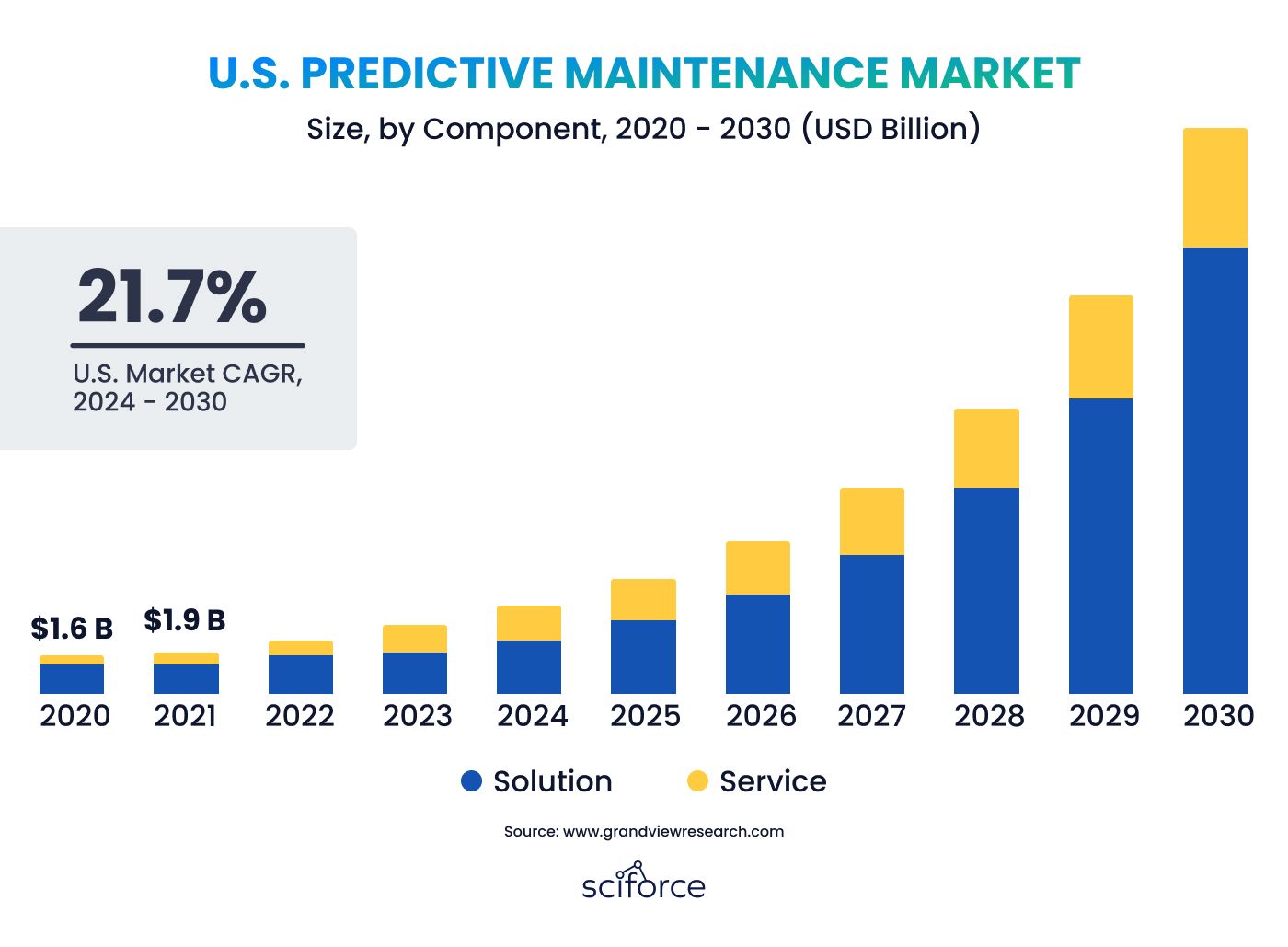
For example, consider a public transit system where trains are taken out of service unexpectedly due to mechanical issues. With PdM, sensors can detect early signs of wear and tear, allowing maintenance teams to address problems before they cause delays, ensuring passengers get to their destinations on time. Or think about a hospital where life-saving equipment fails without warning. PdM can help healthcare facilities keep their critical devices in top condition, preventing interruptions in patient care.
As we approach 2025, staying on top of the latest PdM trends and innovations is essential for any business looking to stay competitive. This article explores the key developments that will shape the future of predictive maintenance, offering practical insights on how these advancements can help businesses avoid downtime, improve efficiency, and ultimately increase profitability.
Predictive maintenance is a proactive way to keep equipment and machinery running smoothly by using data analysis to predict and prevent failures before they occur. Unlike traditional maintenance methods, which either fix problems after they happen (reactive) or follow a set maintenance schedule (preventive), PdM focuses on maintaining equipment only when it's truly needed.
This approach helps maximize efficiency and extend the life of the machinery by addressing issues before they lead to costly breakdowns. Let’s briefly compare three main strategies used in predictive maintenance:
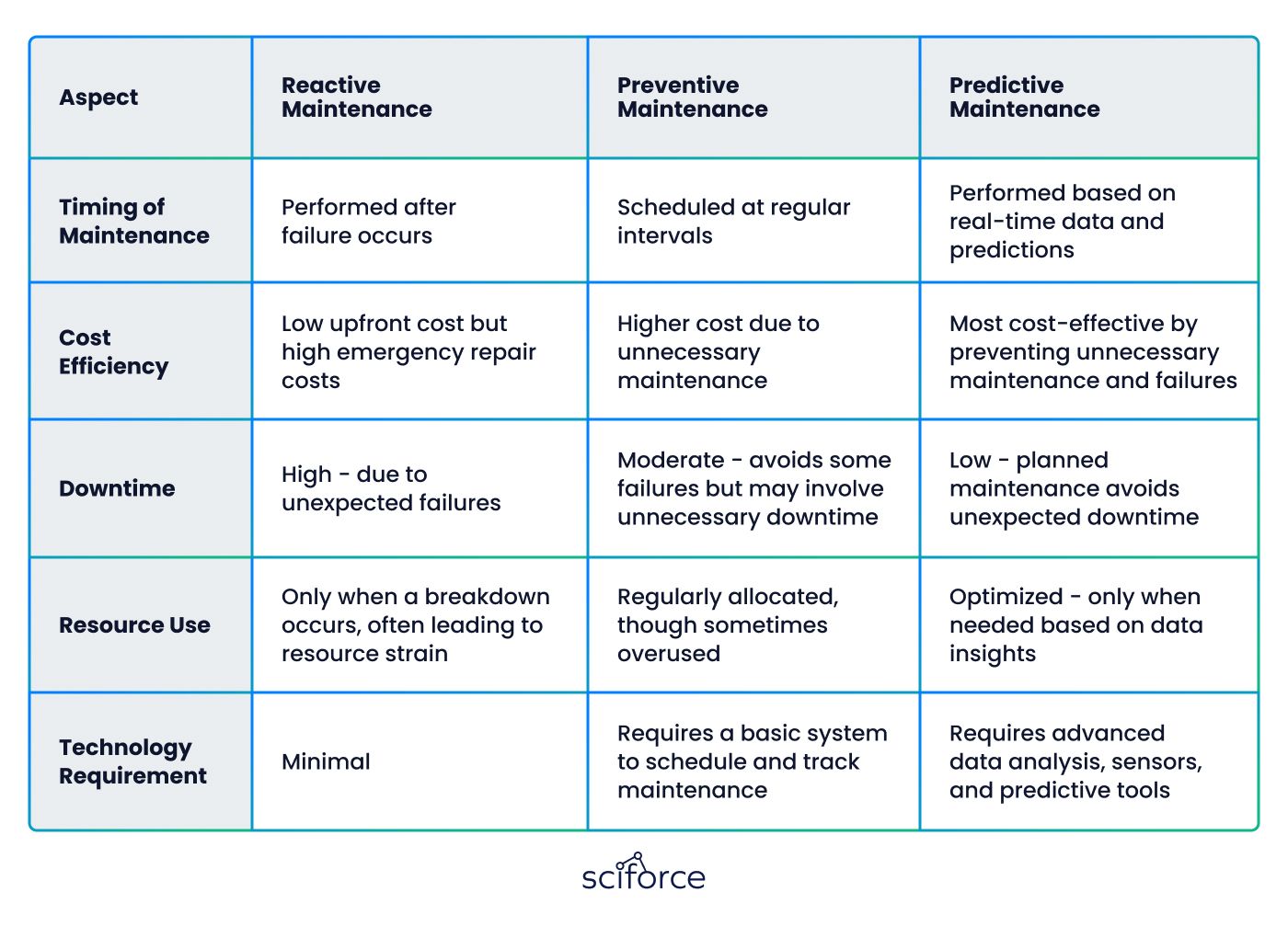
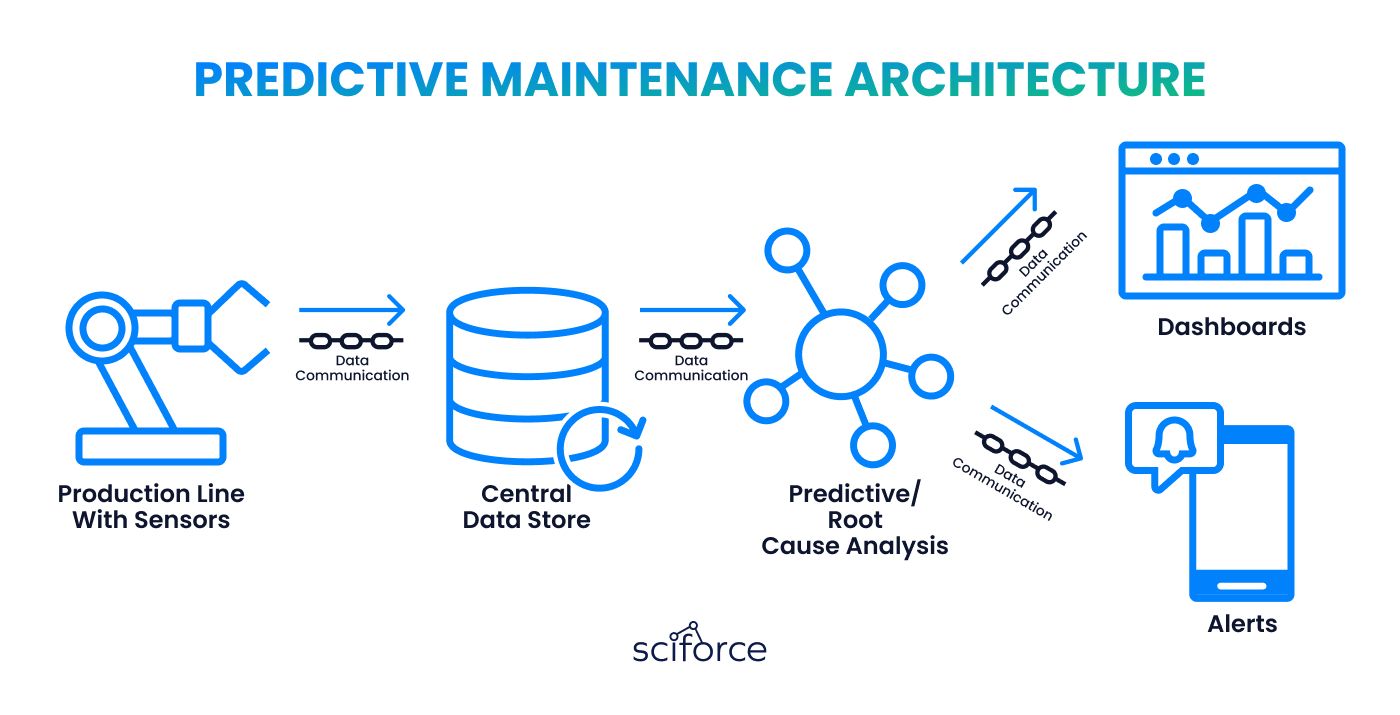
Sensors are strategically installed on critical equipment to continuously monitor operational data in real-time. These sensors collect various performance metrics, such as:
- Temperature: Fluctuations can indicate overheating or cooling system issues. - Vibration: Abnormal vibrations may signal mechanical issues like imbalance, misalignment, or wear and tear. - Pressure: Sudden pressure changes can suggest leaks or blockages in systems like hydraulics or fluid pumps. - Sound: Acoustic sensors help detect changes in noise patterns, which can point to internal component failures. - Humidity: High or low humidity levels can lead to moisture buildup or static discharge, affecting sensitive equipment and leading to potential electrical or mechanical failures.
This stage forms the foundation of predictive maintenance by ensuring a constant flow of data from machines without the need for manual inspections.
Once the sensors capture operational data, it needs to be sent to a centralized platform for storage and analysis. This is often done using:
- Wired or Wireless Networks: Data is transmitted over a secure network to ensure real-time updates, whether via local servers or through cloud infrastructure. - Cloud Platforms: Many PdM systems rely on cloud platforms to handle the large volumes of data generated, offering scalability, remote accessibility, and lower upfront infrastructure costs. - Edge Computing: In more advanced systems, data can be processed locally (on-site) through edge computing, reducing latency and bandwidth use by processing critical data closer to the source before sending essential information to the cloud.
The raw data is then processed using artificial intelligence (AI) and machine learning (ML) algorithms to make sense of the vast amount of information being collected. This step involves:
- Trend Identification: AI models recognize patterns of normal equipment behavior and compare them against real-time data. - Anomaly Detection: When irregularities in performance arise, the system flags these anomalies as potential issues, such as unusual vibration or heat patterns. - Predictive Models: Machine learning models are used to forecast potential failures by predicting how and when equipment components will degrade based on historical and real-time data.
These analyses become more accurate over time as AI models learn from historical data and improve in recognizing failure patterns
If an issue is detected, the system generates automated alerts that are sent to the maintenance team, providing detailed information on:
- Type of Issue: The specific component or system that is experiencing irregularities. - Severity: Whether the issue requires immediate attention or can be addressed during the next scheduled downtime. - Recommended Action: Suggested maintenance tasks, including repairs, replacements, or further diagnostics.
These alerts are usually delivered via mobile apps, dashboards, or directly to the operations team’s devices, ensuring that the right personnel are informed promptly to take corrective action.
With detailed insights from the PdM system, maintenance teams can schedule repairs or replacements at an optimal time. The benefits of this approach include:
- Reduced Unplanned Downtime: Instead of reacting to equipment failures, teams can preemptively address issues, minimizing operational interruptions. - Optimized Spare Parts Management: Knowing which components will likely fail in advance allows for better inventory planning, reducing the need for costly last-minute part procurement. - Efficient Use of Resources: Maintenance tasks are planned during off-peak hours or scheduled downtimes, ensuring minimal disruption to production or service operations.
Predictive maintenance significantly improves resource utilization by making maintenance an intentional and proactive part of business operations rather than a reactive one.
Predictive maintenance is evolving quickly, thanks to new technologies like AI, IoT, edge computing, and digital twins. These advancements are changing the way businesses manage their equipment, helping them prevent breakdowns and operate more efficiently. As we look toward 2025, these trends will continue to drive improvements in PdM, improving the efficiency of complex business infrastructures. Let's explore how they will shape the future of PdM.
Artificial Intelligence (AI) and Machine Learning (ML) analyze large amounts of data from sensors, such as temperature, vibration, and pressure readings, to spot patterns that signal potential equipment problems. This makes failure predictions more accurate, helping maintenance teams to fix problems before equipment breaks down.
Preventing Equipment Failures & Fatigue:
Continuous monitoring of sensors detects early signs of wear and fatigue, predicting potential component failures.
Predicting Human Errors:
AI identifies patterns in maintenance tasks, detecting deviations and recurring mistakes to predict human errors and enable early intervention.
Optimizing Maintenance Schedules:
AI provides condition-based insights to schedule maintenance only when necessary, reducing downtime and improving equipment reliability.
Optimizing Spare Parts Inventory:
AI forecasts spare part needs by analyzing wear patterns, supporting just-in-time inventory to prevent overstocking and shortages.
Improving Energy Efficiency:
AI monitors energy consumption in real time, identifying inefficiencies to reduce energy waste and lower operating costs.
IoT sensors track important factors like machine temperature, vibration, and workload in real time. AI analyzes this data to predict when equipment will need maintenance, identifying issues like worn-out parts or motor fatigue. With this information, businesses can adjust their production schedules to perform maintenance during less busy times, reducing unexpected interruptions and keeping machines running smoothly during peak production.
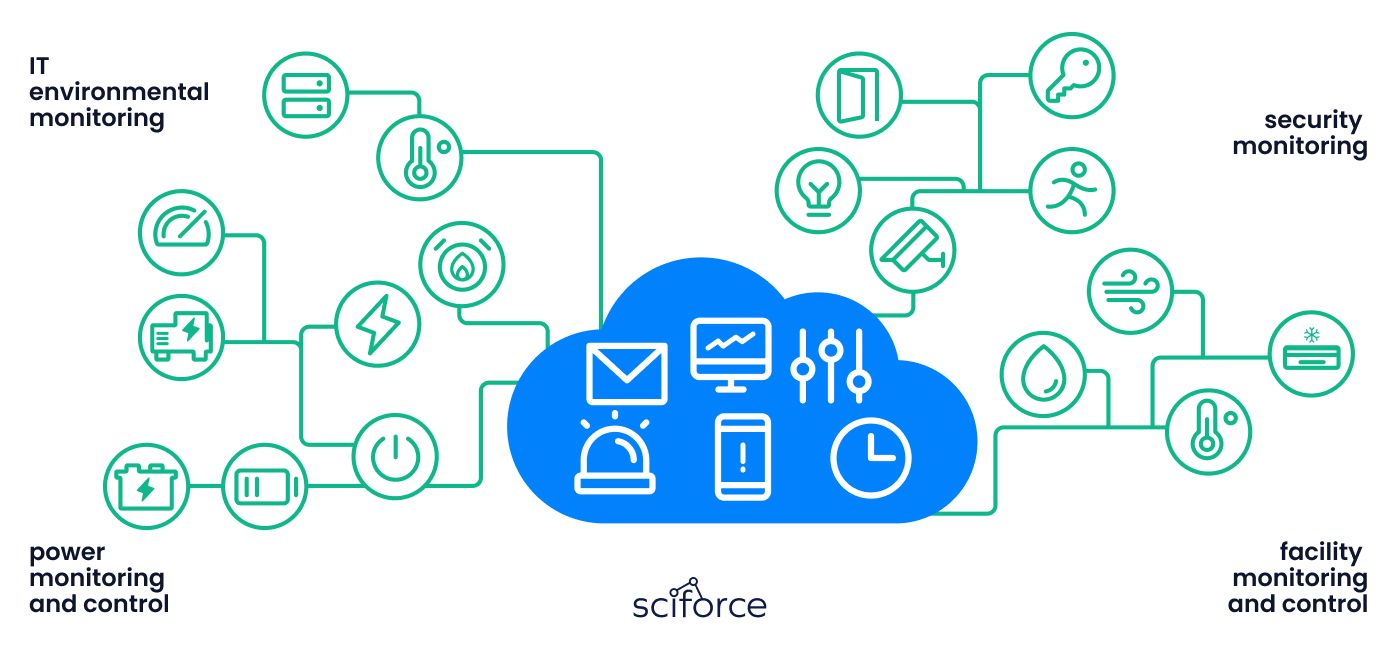
Predicting Maintenance Costs:
AI uses real-time IoT data (vibration, temperature, power consumption) to predict maintenance timing and calculate costs, including spare parts, labor, and downtime.
Identifying Hidden Inefficiencies:
IoT data and AI help detect inefficiencies like excess energy use or incorrect calibration, reducing energy costs and extending equipment lifespan.
Reducing Insurance Costs:
Continuous monitoring via IoT sensors predicts equipment failures and safety risks, helping lower insurance premiums and avoid legal claims, compensation costs, and downtime.
Edge computing processes data locally, near its source—such as sensors or machines—instead of sending it to a centralized cloud or data center. This enables faster response times, reduces bandwidth use, and allows real-time decision-making. It’s especially useful in industries where immediate action is required, such as manufacturing or healthcare.
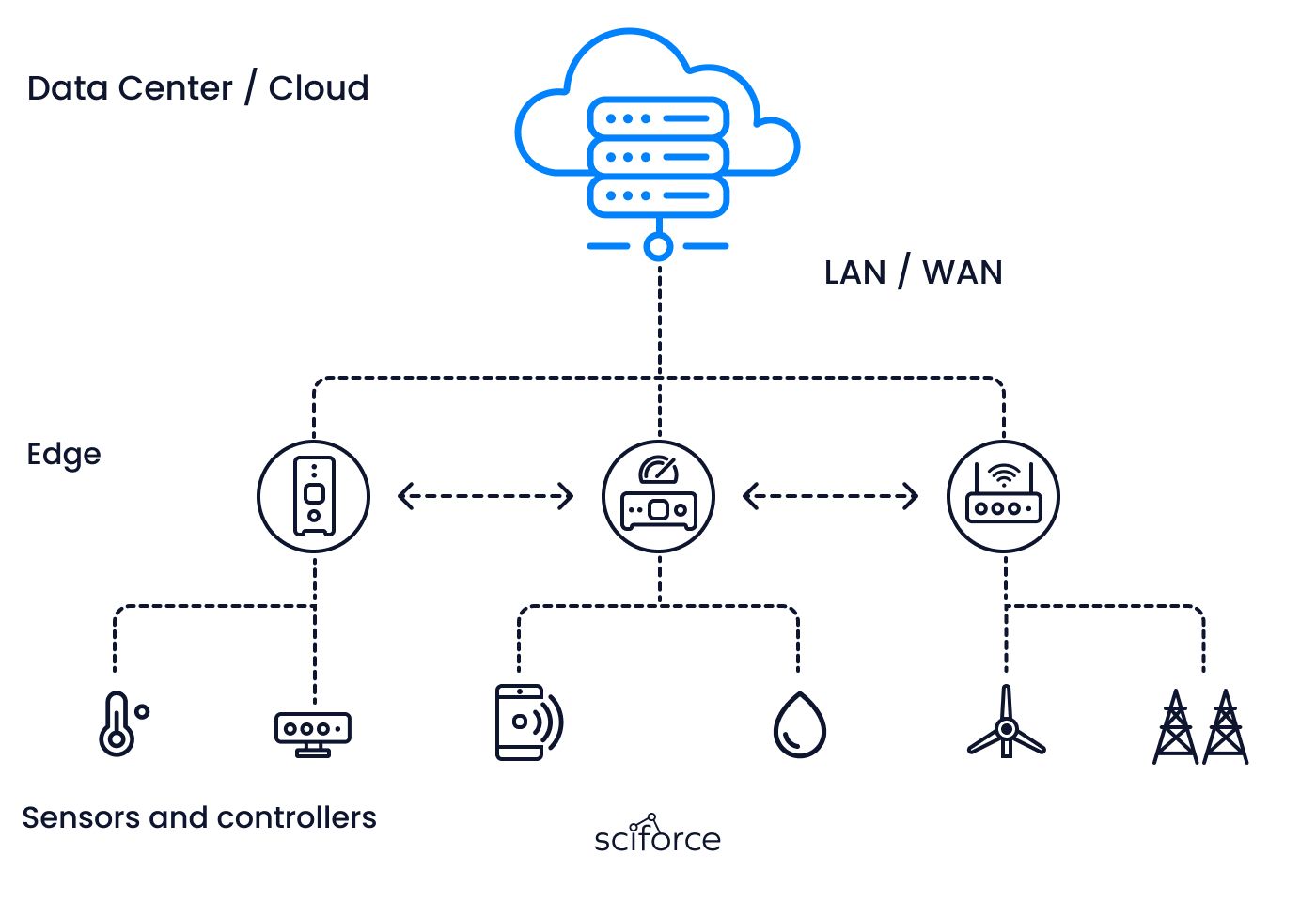
Remote Monitoring for Industrial Sites:
Supports equipment monitoring in remote locations (oil rigs, mines) with limited internet connectivity by processing data locally, ensuring continuous maintenance.
Predictive Maintenance for Legacy Equipment:
Acts as a bridge for older equipment, enabling predictive maintenance without expensive upgrades by processing data locally.
Reducing Latency for Time-Sensitive Operations:
In industries like healthcare and aerospace, local data processing ensures immediate responses, detecting failures and risks in real time.
Digital twins are virtual replicas of physical assets—like machines or systems—that reflect the real-time performance and condition of those assets. These digital models are constantly updated with data from sensors on the actual equipment, tracking things like temperature, pressure, and vibration. Paired with virtual simulations, digital twins allow businesses to better understand how equipment behaves under different conditions.
Simulating Maintenance Scenarios:
Virtual simulations on digital twins allow businesses to test maintenance strategies and failure conditions without impacting real-world operations, optimizing cost and efficiency.
Failure Prediction and Risk Mitigation:
Digital twins, combined with AI, analyze performance data and simulate wear/stress conditions to predict failures, enabling preemptive part replacements.
Improving Equipment Design:
Digital twins provide insights into machine performance, helping businesses optimize equipment design and test new configurations in virtual environments before physical changes.
Autonomous maintenance systems use AI, IoT, and edge computing to automate tasks that are usually done by human technicians. These systems monitor equipment in real-time, analyze performance data, and take immediate action when needed, without human involvement. This can include tasks like adjusting machine settings, running diagnostics, and even making minor repairs.
Real-Time Monitoring and Adjustments:
Continuously monitor equipment via IoT sensors (temperature, pressure, vibration) and automatically adjust settings to prevent damage, e.g., reducing motor load if overheating occurs.
Self-Diagnostics and Automated Repairs:
Perform diagnostics and basic maintenance tasks (resetting, tightening, recalibrating) autonomously; alert technicians for more complex repairs with detailed diagnostics.
Enhanced Predictive Insights:
Analyze data trends to predict future maintenance needs, schedule interventions, and alert maintenance crews in advance, e.g., predicting service needs for aircraft engines.
Our predictive maintenance solutions help businesses move from reactive to proactive maintenance. Using real-time data and advanced anomaly detection, we’ve worked with clients to prevent unexpected equipment failures, reduce downtime, and improve overall efficiency. Below are some examples of how our expertise has helped businesses solve critical maintenance challenges.
A technology company managing large data centers faced repeated pump failures in their cooling systems, leading to costly unplanned downtime. Despite regular inspections, the client couldn’t predict or prevent these failures in time. They needed a solution to detect issues early and avoid unexpected breakdowns.
Challenge
_- Unexpected Pump Failures: _Critical pumps in the cooling systems were failing without warning, causing major disruptions. - No Labeled Data: The client didn’t have labeled data to train a predictive model, making it hard to link sensor data to pump failures. - Complex Data: The cooling system’s data included over 100 sensor readings, making it difficult to identify the key indicators of pump failures.
Solution
We implemented an anomaly detection system using algorithms like Isolation Forest to monitor the equipment in real time. This system identified unusual patterns in the data and flagged potential problems early, allowing the maintenance team to take action before a pump failed.
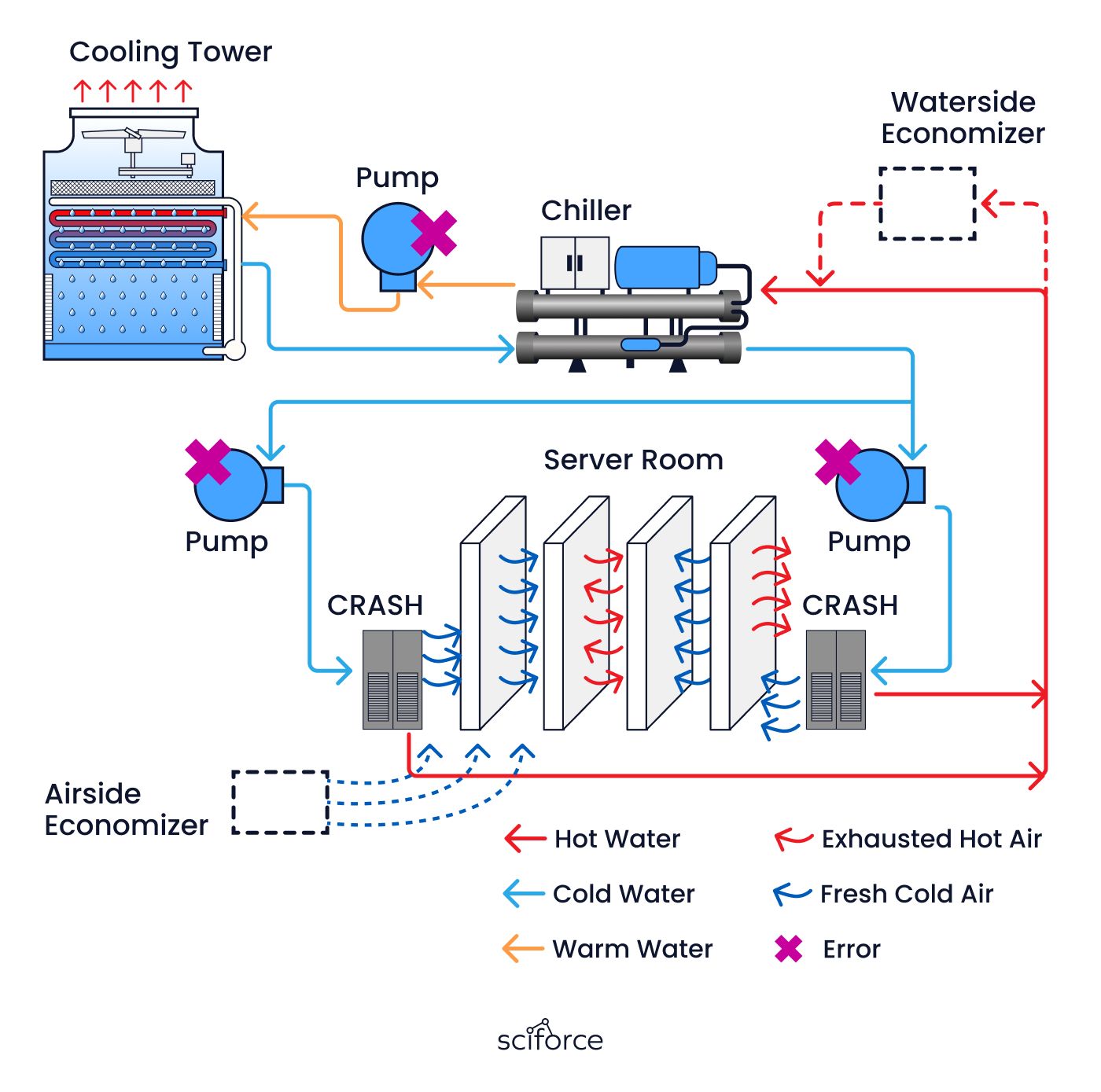
Real-Time Monitoring:
The system continuously analyzed data from key sensors, such as temperature, pressure, and flow rate, to detect early signs of pump issues.
Anomaly Detection:
We used multiple algorithms to ensure accurate detection of anomalies, reducing false alerts.
Correlation Analysis:
By linking anomalies to pump failure dates, we identified specific patterns that helped predict failures before they happened.
Results
- 30% Reduction in False Alarms:
The system became better at identifying real issues, cutting down on unnecessary alerts.
- 40% Increase in Detection Accuracy:
The system’s ability to correctly detect issues improved, allowing more precise monitoring.
- 25% Decrease in Unplanned Downtime:
The early warnings enabled the maintenance team to address problems before they caused equipment failure.
- 20% Faster Response Time:
Maintenance teams were able to respond more quickly to potential issues, reducing the risk of larger breakdowns.
The company shifted from a reactive approach to a proactive maintenance strategy, reducing operational disruptions and improving the reliability of their cooling systems. By using real-time data and advanced detection, the client saw fewer pump failures and better performance across their data centers.
The project focused on providing a real-time machine monitoring product that uses wireless sensors to measure key data like vibration and temperature. It includes an anomaly detection system with models like HBOS, KNN, and AutoEncoder, which spot performance problems and detect unusual patterns in real time. Users can view machine data and reports through a web portal, allowing them to respond quickly and prevent equipment failures.
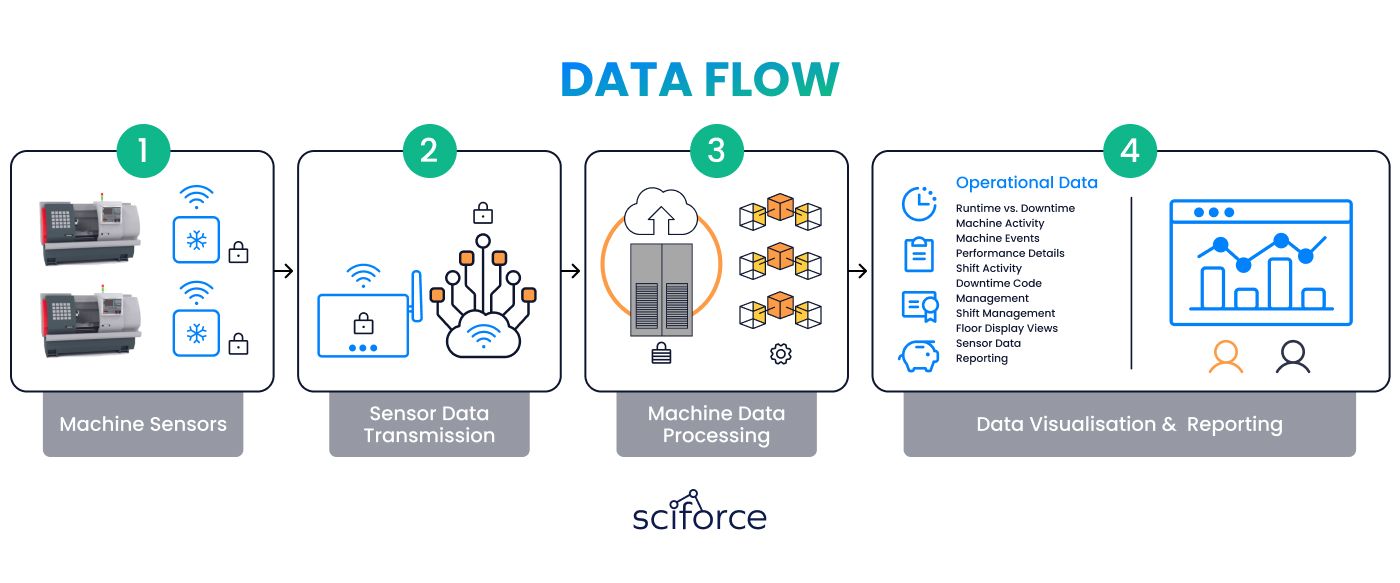
Challenge
Real-time performance monitoring:
The client needed to track multiple machines across locations and detect issues instantly.
Managing large sensor data:
Handling and securely transmitting vast amounts of vibration and temperature data to the cloud.
Early failure warnings:
A system was required to predict failures in advance, minimizing downtime.
Solution
Installed wireless sensors:
Key machine data, like vibration and temperature, is captured and securely transmitted to the cloud via AWS IoT Core using the MQTT protocol.
Anomaly detection system:
Deployed models such as HBOS, KNN, and AutoEncoder to detect performance issues and flag anomalies in real-time.
Cloud-based data processing:
Implemented a cloud system for secure data analysis and reporting, accessible through a web portal from any device.
Result
Real-time monitoring:
Reduced machine failure response times by 35%, enabling users to act swiftly and prevent breakdowns.
Operational efficiency:
Increased overall machine uptime by 20% by detecting issues early, with the HBOS model achieving a 97% accuracy in anomaly detection.
Scalability:
Deployed a secure, scalable system via Docker, cutting deployment time by 45% and simplifying management across multiple environments.
The real-time machine monitoring product successfully addressed the client’s need for proactive maintenance and performance tracking. By integrating wireless sensors and an advanced anomaly detection system, the solution provided real-time insights into machine health, allowing users to prevent breakdowns and reduce downtime.
Predictive maintenance is no longer just a nice-to-have—it’s a game changer for businesses that rely on critical machinery. By catching problems before they cause downtime, PdM helps keep operations running smoothly, boosts efficiency, and extends the life of your equipment. With technologies like AI, IoT, edge computing, and digital twins driving PdM forward, it’s easier than ever to take a proactive approach to maintenance.
Looking to improve your operations with predictive maintenance? Contact us for a free consultation and discover how PdM can make a real difference in your business.